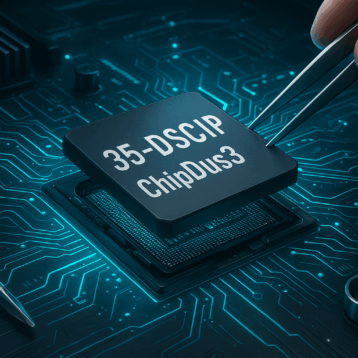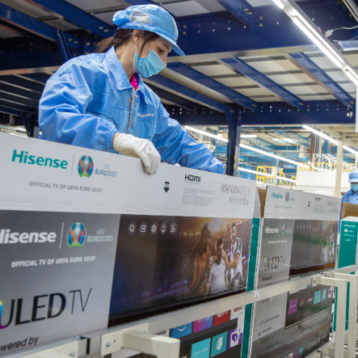|
Deputy Director of ICT, Zhiwei Xu, acknowledges that China is entering the chip manufacturing market very late in the game. “Twenty years ago in China, we didn’t support R&D for microprocessors,” he said at the Hot Chips conference in Palo Alto last week. “The decision makers and [Chinese] IT community have come to realize that CPUs are important.”
However, China is making ground and has achieved massive progress. The researchers first started designing a single-core CPU early this decade and then in each progressive year the team has tripled the performance of the chip. Despite its late start, China is making rapid progress. The ICT group began designing a single-core CPU in 2001, and by the following year had developed Godson-1, China’s first general-purpose CPU. In 2006, the team introduced ever faster versions of a second chip, Godson-2, based on the original design.
A French-Italian company called ST Microelectronics manufactures Godson chips in China for Loongson, which in Chinese means ”dragon chip.” China has already incorporated the chips alongside Linux operating systems and other open-source software in their home grown personal computers (PC) and servers. Tom Halfhill, an analyst at research firm In-Stat, says that “They use a lot of open-source software because it’s free.” To implement IT into rural China, the government intends to get as many PCs into schools and workplaces as they can by using open-source software.
|
The main focus for the Chinese is to control this important sector of technology. Just as America would like to be energy independent, China is looking forward to be technologically independent. Halfhill also adds that, “They don’t want to be dependent on outside countries for critical technologies like microprocessors, which are, nowadays, a fundamental commodity.” China would also like to be on par with the west because there are Federal laws in the U.S prohibiting the export of state-of-the-art microprocessors from the United States to China and chips shipped to China might be a few generations behind the newest ones in the west.
The latest Godson-3 chip, which is slated to appear in 2009, has four core processing units that work in parallel. The team has already started work on an eight-core version, but both versions will be built using 65-nanometer lithography processes, which are already a generation older than Intel’s current 45-nanometer processes. However, the most future forward feature of the Godson-3 chip is its scalability. This denotes that more cores can be added in the future generations without major redesign. Furthermore, the architecture permits engineers to precisely regulate the power usage and are even able to shut down cores when not in use.
The earlier chips, Godson-1 and Godson-2, were not able to run most commercial software due to its incompatibility with Intel’s x86 architecture. Therefore, the researchers have appended 200 additional instructions to the Godson-3 chip to simulate an x86 chip. This allows Godson-3 to run more software, including Microsoft Windows operating systems.
The team at ICT intends to boost the chip program through collaboration with other companies and researchers. “We still lag behind the international partners a lot,” says Xu. “But we are doing our best to join the international community.”
TFOT has previously written about Intel’s new system-on-a-chip with an EP80579 Integrated Processor family which can be applied to security, mobile internet devices, storage, communications, and industrial robotics applications. TFOT also recently covered AMD’s upcoming 12-core processor, which serves as competition to Intel, targeted for release in the first half of 2010 and “Larrabee” – Intel’s upcoming many-core GPU which has a new approach to the software rendering 3-D pipeline, a ”many-core” programming model and performance analysis tool for several applications.
Additional information on ST Electronic can be obtained at this website and information of Loongson’s development can be found here.









![How to Reset Insignia TV [Step-By-Step Guide]](https://thefutureofthings.com/wp-content/uploads/2025/01/Insignia-Roku-TV-358x358.png)


